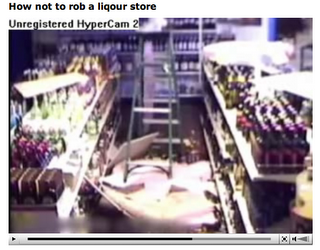
So wer'e going to go sushi before Emily's play tonight.
Tonight's also the night that we meet Budros' new Russian girlfriend, Elena.
I only hope she's not Putin anything radioactive in my noguri...
And this just in... On a recent business trip to Colorado, Japan's agriculture minister popped into an inviting Japanese restaurant with a hankering for a taste of back home. What Toshikatsu Matsuoka found instead was something he considered a high culinary crime -- sushi served on the same menu as Korean-style barbecued beef.
"Such a thing is unthinkable," he said. "Call it what you will, but it is not a Japanese restaurant."
A fast-growing list of gastronomic indignities -- from sham sake in Paris to shoddy sashimi in Bangkok -- has prompted Japanese authorities to launch a counterattack in defense of this nation's celebrated food culture. With restaurants around the globe describing themselves as Japanese while actually serving food that is Asian fusion, or just plain bad, the government here announced a plan this month to offer official seals of approval to overseas eateries deemed to be "pure Japanese."
Some observers here have suggested that the government's new push for food purity overseas is yet another expression of resurgent Japanese nationalism. But the mentality in Japan also echoes a similar movement by several nations -- including Italy and Thailand -- now offering guidelines and reward programs to restaurants abroad to regain a measure of control over their increasingly internationalized cuisines.
So beware, America, home of the California roll. The Sushi Police are on their way.
A trial run of sorts was launched this summer in France, where secret inspectors selected by a panel of food specialists were dispatched to 80 restaurants in Paris that claimed to serve Japanese cuisine. Some establishments invited the scrutiny, while others were targeted with surprise checks. About one-third fell short of standards -- making them ineligible to display an official seal emblazoned with cherry blossoms in their windows or to be listed on a government-sponsored Web site of Japanese restaurants in Paris.
Matsuoka, who took over Japan's top agricultural job in September, is the mastermind of the new "Japanese restaurant authentication plan." He said it does not always take a culinary sleuth to spot an impostor. "Sometimes you can tell just by looking at their signs that these places are phony," he said.
"What people need to understand is that real Japanese food is a highly developed art. It involves all the senses; it should be beautifully presented, use genuine ingredients and be made by a trained chef," he continued. "What we are seeing now are restaurants that pretend to offer Japanese cooking but are really Korean, Chinese or Filipino. We must protect our food culture."
In recent years, few culinary traditions have witnessed the kind of global boom, and distortion, of Japanese food.
In the United States alone, the number of restaurants claiming to serve Japanese food soared to 9,000 in 2005, or double the number a decade ago, according to Japanese government statistics. The government projects that the number of Japanese restaurants worldwide will leap to 48,000 by 2009, more than double the current level.
Some have gone all-out to ensure authenticity. Masa in New York City imports its fish from Tokyo's Tsukiji Fish Market while Umu in London regularly flies in the soft water of Kyoto, Japan's old capital, to make its bonito fish broths. But they are largely exceptions in a world where the Japanese fear their food is being lost in translation.
In the United States, the proliferation of counterfeit Japanese foods now includes seaweed rolls stuffed with smoked salmon and cream cheese. In Canada, Vera's Burger Shack in Vancouver is offering tempura-battered onion rings. As the recent test in Paris showed, even such gastronomic bastions as France can be guilty of sushi sacrilege.
"You will find restaurants here that serve salmon sushi with a little yakitori [charcoaled chicken] on the side and call themselves Japanese," said Tsuyoshi Nakai, the Paris head of JETRO, Japan's overseas trade promotion arm. "Then there are the ones serving what they claim is Japanese sake, but of course, it isn't. What is it? I don't know. But it smells, and tastes, very strange."
With the demand for real Japanese chefs far greater than the global supply in a nation with a shrinking population and few modern-day emigrants, many foreign owners of Japanese restaurants have turned to cooks from other Asian countries to add a faux touch of authenticity to their establishments. Pan-Asian restaurants have also begun adding more healthful and light Japanese dishes to their menus to cater to new tastes, some of them going as far as changing their names to the inevitable "Mt. Fuji" or "Sakura" to lure broader clienteles.
That has infuriated Japanese sushi chefs overseas, leading some -- including those who formed the D.C. Sushi Society in the 1990s -- to unite into advocacy groups aimed at protecting an elaborate form of cooking that is tradition-bound and highly hierarchical.
Officials here emphasize that it is not the race of the cooks they are concerned about, but the fact that such chefs are rarely properly trained and know little about the culture behind the food.
In Japanese haute cuisine, for example, the aesthetics of a meal -- from elegant ceramic serving bowls to suitable flower arrangements -- are considered as important as the food itself. Quality quashes quantity; a single mouthful of otoro -- fatty tuna sashimi sliced just right -- can sell for $20 in Tokyo sushi houses. Japan's famously elaborate kaiseki ryori can take days to prepare and must be presented in small courses on plates and in color combinations that delight and amuse.
Most importantly, such meals must be prepared by highly specialized chefs -- some of whom apprentice for years before they are permitted to cook for paying customers.
Makoto Fukue, the head of the Tokyo Sushi Academy who trains about 75 Japanese chefs-for-export a year, insisted that the inexperience of some foreign sushi chefs may be driving customers away from more adventurous Japanese fare.
"Many Americans do not like the taste of conger eel sushi, but that is because the chefs are not preparing it right -- and so it tastes fishy and has an odor," he said. "If you had a trained chef preparing those same foods, you would find more openness to experiment with the same foods we eat in Japan."
But some here have expressed caution about the launch of the government approval system, arguing that Japan is a country also notorious for adapting foreign foods to local tastes. Indeed, that rare talent gave birth to Japanese seafood and mayonnaise pizza.
In addition, many so-called Japanese foods have foreign influences or roots. Batter-coated and fried food known as tempura, for instance, was introduced to the Japanese by Portuguese missionaries during the 16th century.
"The question is, what can we really call 'Japanese food'?" said Masuhiro Yamamoto, the Tokyo-based food guru. "Here in Japan, we believe that tonkatsu [fried pork cutlet] is essentially Japanese, but try and tell the French that isn't porc paner."
The government has appointed an advisory board of food luminaries and intellectuals to develop a workable method for the project ahead of its full launch in April. Matsuoka said the most likely scenario would be the creation of government-sanctioned food commissions in major countries to evaluate a restaurant's "Japanese-ness" based on authentic ingredients, chef training, aesthetics and other criteria.
Such a method might also coincidentally increase Japanese food exports, given that restaurants using Japanese products are likely to score some brownie points.
"Of course using Japanese materials would be preferable," Matsuoka said. "But our real purpose is to set benchmarks for how Japanese food is made overseas. We take our food very seriously."
And starting Summer 2007, I, H. Michael Karshis, will be heading a task force throughout Europe authenticating and then distributing either my TotallyBueno stickers at TexMex restaurants any my Real-Deal Texas stickers at Bar B-Q joints - who's with me?
That's Right,
HMK
Thanks to Anthony Faiola at the Washington Post Foreign Service
















































































